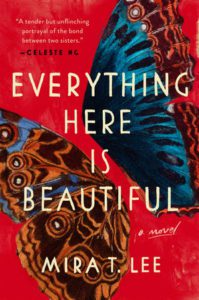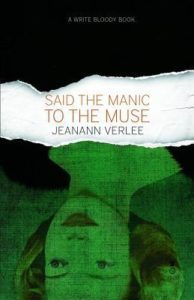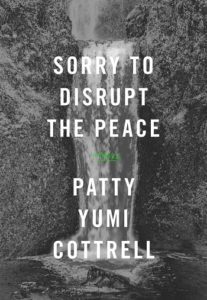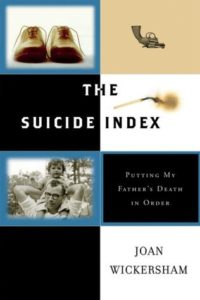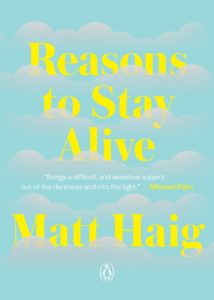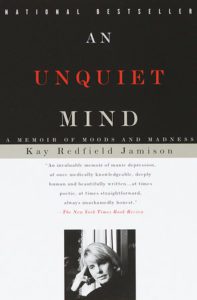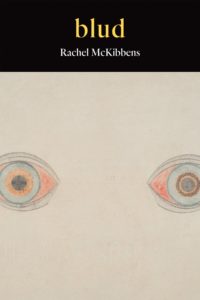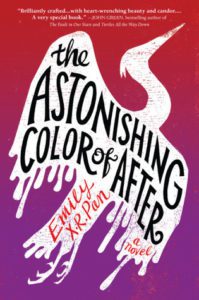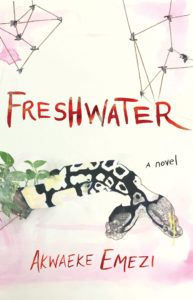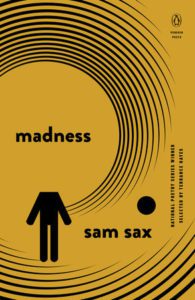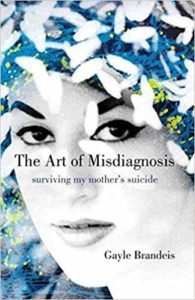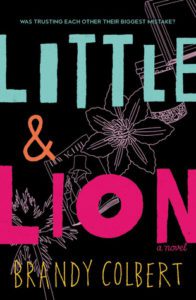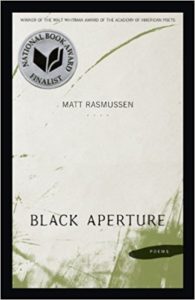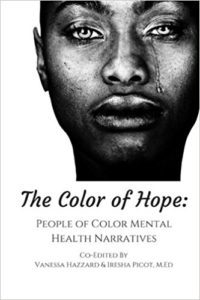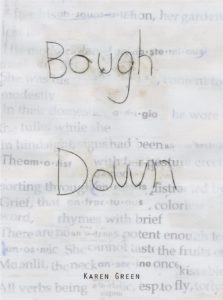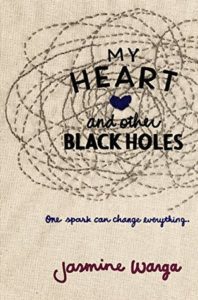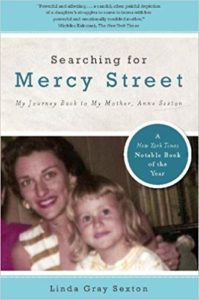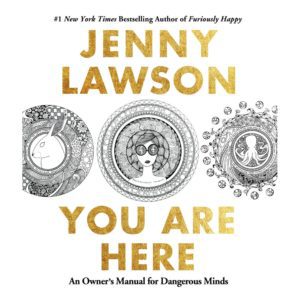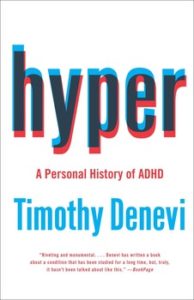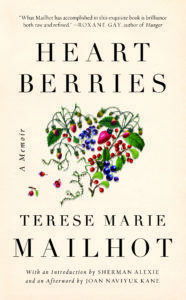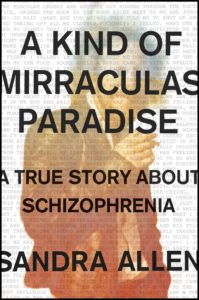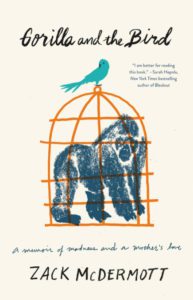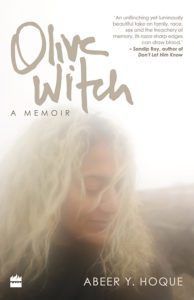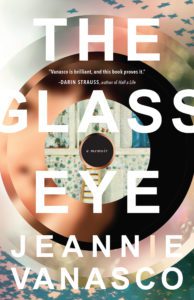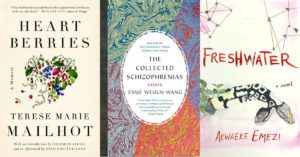
May is Mental Health Month, and while we publish work that engages with and addresses the myriad of stigmas surrounding mental illness year-round at The Rumpus, we thought it an especially important time to share a list of books that do the same.
Below are memoirs, novels, poetry collections, and more that Rumpus editors recommend as great reads that also shed light on what it means to live with mental illness.
If you or someone you know is struggling with mental illness, NAMI (National Alliance on Mental Illness) has put together a list of twenty-five resources that offer a place to start.
***
Everything Here is Beautiful by Mira T. Lee
When Lucia starts hearing voices, it is her older sister Miranda who must find a way to reach her sister. Lucia impetuously plows ahead, but the bitter constant is that she is, in fact, mentally ill. Lucia lives life on a grand scale, until, inevitably, she crashes to earth. Miranda leaves her own self-contained life in Switzerland to rescue her sister again—but only Lucia can decide whether she wants to be saved. The bonds of sisterly devotion stretch across oceans—but what does it take to break them? Everything Here Is Beautiful is, at its heart, an immigrant story, and a young woman’s quest to find fulfillment and a life unconstrained by her illness. But it’s also an unforgettable, gut-wrenching story of the sacrifices we make to truly love someone—and when loyalty to one’s self must prevail over all.
Said the Manic to the Muse by Jeanann Verlee
Jeanann Verlee’s second book, Said the Manic to the Muse, takes a deeper, more focused look at the erratic, whimsical, ominous, and sometimes perilous ways manic depression functions. Introduced through the careful prophecy of three archetypes: Medea, Jezebel, and Kali―each a woman largely misrepresented and wholly misunderstood―these poems detail the story of one woman’s struggle to maintain both strength and sanity in the face of abandonment and aging. From dangerous trysts and barroom brawls to “grief-induced psychosis,” Said the Manic to the Muse recounts the year she lost everything, including her mind.
Sorry to Disrupt the Peace by Patty Yumi Cottrell
Helen Moran is thirty-two years old, single, childless, college-educated, and partially employed as a guardian of troubled young people in New York. She’s accepting a delivery from IKEA in her shared studio apartment when her uncle calls to break the news: Helen’s adoptive brother is dead. According to the internet, there are six possible reasons why her brother might have killed himself. But Helen knows better: she knows that six reasons is only shorthand for the abyss. Helen also knows that she alone is qualified to launch a serious investigation into his death, so she purchases a one-way ticket to Milwaukee. There, as she searches her childhood home and attempts to uncover why someone would choose to die, she will face her estranged family, her brother’s few friends, and the overzealous grief counselor, Chad Lambo; she may also discover what it truly means to be alive.
The Collected Schizophrenias by Esmé Weijun Wang
Schizophrenia is not a single unifying diagnosis, and Esmé Weijun Wang writes not just to her fellow members of the “collected schizophrenias” but to those who wish to understand it as well. Opening with the journey toward her diagnosis of schizoaffective disorder, Wang discusses the medical community’s own disagreement about labels and procedures for diagnosing those with mental illness, and then follows an arc that examines the manifestations of schizophrenia in her life. Wang’s analytical eye, honed as a former lab researcher at Stanford, allows her to balance research with personal narrative. An essay collection of undeniable power, The Collected Schizophrenias dispels misconceptions and provides insight into a condition long misunderstood. A Rumpus Book Club upcoming selection!
The Suicide Index by Joan Wickersham
Sixteen years ago, Joan Wickersham’s father shot himself in the head. The father she loved would never have killed himself, and yet he had. His death made a mystery of his entire life. Using an index—that most formal and orderly of structures—Wickersham explores this chaotic and incomprehensible reality. Every bit of family history—marriage, parents, business failures—and every encounter with friends, doctors, and other survivors exposes another facet of elusive truth. Dark, funny, sad, and gripping, at once a philosophical and deeply personal exploration, The Suicide Index is, finally, a daughter’s anguished, loving elegy to her father.
Reasons to Stay Alive by Matt Haig
Everyone’s lives are touched by mental illness: if we do not suffer from it ourselves, then we have a friend or loved one who does. Matt’s frankness about his experiences is both inspiring to those who feel daunted by depression and illuminating to those who are mystified by it. Above all, his humor and encouragement never let us lose sight of hope. Speaking as his present self to his former self in the depths of depression, Matt is adamant that the oldest cliché is the truest—there is light at the end of the tunnel. He teaches us to celebrate the small joys and moments of peace that life brings, and reminds us that there are always reasons to stay alive.
An Unquiet Mind: A Memoir of Moods and Madness by Kay Redfield Jamison
From a leading international authority on manic-depressive illness comes a remarkable personal testimony: the revelation of her own struggle since childhood with manic-depression, and how it has shaped her life.
blud by Rachel McKibbens
McKibbens’s blud is a collection of dark, rhythmic poems interested in the ways in which inherited things―bloodlines, mental illnesses, trauma―affect their inheritors. Reveling in form and sound, McKibbens’s writing takes back control, undaunted by the idea of sinking its teeth into the ugliest moments of life, while still believing―and looking for―the good underneath all the bruising.
The Astonishing Color of After by Emily X.R. Pan
Leigh Chen Sanders is absolutely certain about one thing: When her mother died by suicide, she turned into a bird. Leigh, who is half Asian and half white, travels to Taiwan to meet her maternal grandparents for the first time. There, she is determined to find her mother, the bird. In her search, she winds up chasing after ghosts, uncovering family secrets, and forging a new relationship with her grandparents. Alternating between real and magic, past and present, friendship and romance, hope and despair, The Astonishing Color of After is a stunning and heartbreaking novel about finding oneself through family history, art, grief, and love.
Freshwater by Akwaeke Emezi
An extraordinary debut novel, Freshwater explores the surreal experience of having a fractured self. It centers around a young Nigerian woman, Ada, who develops separate selves within her as a result of being born “with one foot on the other side.” Unsettling, heart-wrenching, dark, and powerful, Freshwater is a sharp evocation of a rare way of experiencing the world, one that illuminates how we all construct our identities. Narrated from the perspective of the various selves within Ada, and based in the author’s realities, Freshwater explores the metaphysics of identity and mental health, plunging the reader into the mystery of being and self.
Madness by sam sax
In this powerful debut collection, sam sax explores and explodes the linkages between desire, addiction, and the history of mental health. These brave, formally dexterous poems examine antiquated diagnoses and procedures from hysteria to lobotomy; offer meditations on risky sex; and take up the poet’s personal and family histories as mental health patients and practitioners. Ultimately, Madness attempts to build a queer lineage out of inherited language and cultural artifacts; these poems trouble the static categories of sanity, heterosexuality, masculinity, normality, and health. sax’s innovative collection embodies the strange and disjunctive workings of the mind as it grapples to make sense of the world around it.
The Art of Misdiagnosis: Surviving My Mother’s Suicide by Gayle Brandeis
Around the time of her suicide, Brandeis’s mother had been working on a documentary about the rare illnesses she thought ravaged her family. In The Art of Misdiagnosis, taking its title from her mother’s documentary, Brandeis braids together her own narration of the charged weeks surrounding her mother’s suicide, transcripts of her mother’s documentary, research into delusional and factitious disorders, and Brandeis’s own experience with misdiagnosis and illness (both fabricated and real). Slowly and expertly, The Art of Misdiagnosis peels back the complicated layers of deception and complicity, of physical and mental illness in Brandeis’s family, to show how she and her mother had misdiagnosed one another. Brandeis’s memoir is both a compelling search into the mystery of one’s own family and a life-affirming story of the relief discovered through breaking familial and personal silences.
Little & Lion by Brandy Colbert
When Suzette comes home to Los Angeles from her boarding school in New England, she’s isn’t sure if she’ll ever want to go back. LA is where her friends and family are (as well as her crush, Emil). And her stepbrother, Lionel, who has been diagnosed with bipolar disorder, needs her emotional support. But as she settles into her old life, Suzette finds herself falling for someone new… the same girl her brother is in love with. When Lionel’s disorder spirals out of control, Suzette is forced to confront her past mistakes and find a way to help her brother before he hurts himself—or worse.
Black Aperture by Matt Rasmussen
In his debut collection, Matt Rasmussen faces the tragedy of his brother’s suicide, refusing to focus on the expected pathos, blurring the edge between grief and humor. In “Outgoing,” the speaker erases his brother’s answering machine message to save his family from “the shame of dead you / answering calls.” In other poems, once-ordinary objects become dreamlike. A buried light bulb blooms downward, “a flower / of smoldering filaments.” A refrigerator holds an evening landscape, “a tinfoil lake,” “vegetables / dying in the crisper.” Destructive and redemptive, Black Aperture opens to the complicated entanglements of mourning: damage and healing, sorrow and laughter, and torment balanced with moments of relief.
The Color of Hope: People of Color Mental Health Narratives edited by Vanessa Hazzard and Iresha Picot
The Color of Hope: People of Color Mental Health Narratives is a project that sheds light on mental health in communities of color by sharing stories by those affected by mental illness. The contributors represent those living with or affected by loved ones with depression, bipolar disorder, borderline personality disorder, post-traumatic stress disorder, schizophrenia, and other conditions. They are men and women, children and adults, political prisoners, college students, politicians, musicians, business people, artists, fathers, mothers, daughters… all of African, Latino, and Asian descent. Their narratives add to the tapestry of the human experience and without them, our history is incomplete.
Bough Down by Karen Green
With fearlessness and grace, Bough Down reports from deep inside the maelstrom of grief. Artist and writer Karen Green conjures the inscrutable space of love and loss, clarity and contradiction, sense and madness. She summons memory and the machination of the interior mind with the emotional acuity of music as she charts her passage through the devastation of her husband’s suicide. Her world is haunted by the unnameable, and yet she renders that world with poetic precision in her struggle to make sense of not only of death but of living. In counterpoint, tiny visual collages punctuate the text, each made of salvaged language and scraps of the material world―pages torn from books, bits of paper refuse, drawings and photographs, old postage stamps and the albums which classify them. Each collage—and the creative act of making it—evinces the reassembling of life. A breathtaking lyric elegy, Bough Down uses music and silence, color and its absence, authority of experience, and the doubt that trembles at its center to fulfill a humane artistic vision.
My Heart and Other Black Holes by Jasmine Warga
Sixteen-year-old physics nerd Aysel is obsessed with plotting her own death. With a mother who can barely look at her without wincing, classmates who whisper behind her back, and a father whose violent crime rocked her small town, Aysel is ready to turn her potential energy into nothingness. There’s only one problem: she’s not sure she has the courage to do it alone. But once she discovers a website with a section called Suicide Partners, Aysel’s convinced she’s found her solution—Roman, a teenage boy who’s haunted by a family tragedy, is looking for a partner. Even though Aysel and Roman have nothing in common, they slowly start to fill in each other’s broken lives. But as their suicide pact becomes more concrete, Aysel begins to question whether she really wants to go through with it. Ultimately, she must choose between wanting to die or trying to convince Roman to live so they can discover the potential of their energy together.
Searching for Mercy Street: My Journey Back to My Mother, Anne Sexton by Linda Gray Sexton
Linda Gray Sexton’s critically acclaimed memoir is an honest, unsparing account of the anguish and fierce love that bound a brilliant, difficult mother and the daughter she left behind. Linda Sexton was twenty-one when her mother killed herself, and now she looks back, remembers, and tries to come to terms with her mother’s life. Life with Anne was a wild mixture of suicidal depression and manic happiness, inappropriate behavior, and midnight trips to the psychiatric ward. Anne taught Linda how to write, how to see, how to imagine—and only Linda could have written a book that captures so vividly the intimate details and lingering emotions of their life together. Searching for Mercy Street speaks to everyone who admires Anne Sexton and to every daughter or son who knows the pain of an imperfect childhood.
You Are Here: An Owner’s Manual for Dangerous Minds by Jenny Lawson
You Are Here is something only Jenny Lawson could create. A combination of inspiration, therapy, coloring, humor, and advice, this book is filled with Jenny’s amazingly intricate illustrations, all on perforated pages that can be easily torn out, hung up, and shared. Drawing on the tenets of art therapy―which you can do while hiding in the pillow fort under your bed―You Are Here is ready to be made entirely your own. Some of the material is dark, some is light; some is silly and profane and irreverent. Gathered together, this is life, happening right now, all around, in its messy glory, as only Jenny Lawson could show us.
My Body is a Book of Rules by Elissa Washuta
As Elissa Washuta makes the transition from college kid to independent adult, she finds herself overwhelmed by the calamities piling up in her brain. When her mood-stabilizing medications aren’t threatening her life, they’re shoving her from depression to mania and back in the space of an hour. Her crisis of American Indian identity bleeds into other areas of self-doubt; mental illness, sexual trauma, ethnic identity, and independence become intertwined. Sifting through the scraps of her past in seventeen formally inventive chapters, Washuta aligns the strictures of her Catholic school education with Cosmopolitan’s mandates for womanhood, views memories through the distorting lens of Law & Order: Special Victims Unit, and contrasts her bipolar highs and lows with those of Britney Spears and Kurt Cobain. Built on the bones of fundamental identity questions as contorted by a distressed brain, My Body Is a Book of Rules pulls no punches in its self-deprecating and ferocious look at human fallibility.
Hyper by Tim Denevi
Among the first generation of boys prescribed medication for ADHD in the 1980s, Timothy Denevi took Ritalin at the age of six and suffered a psychotic reaction. Thus began his long odyssey through a variety of treatments. Denevi describes how he made his way to adulthood, knowing he was a problem for those who loved him, longing to be able to be good and fit in, and finally realizing he had to come to grips with his disorder before his life spun out of control. Using these experiences as a springboard, Denevi also traces our understanding and treatment of ADHD from the nineteenth century, when bad parenting and even government conspiracies were blamed, through the twentieth century and drug treatments like Benzedrine, Ritalin, and antidepressants. His insightful history shows how drugs became the treatment of choice for ADHD, rather than individually crafted treatments like the one that saved his life.
Heart Berries by Terese Marie Mailhot
Heart Berries is a powerful, poetic memoir of a woman’s coming of age on the Seabird Island Indian Reservation in the Pacific Northwest. Having survived a profoundly dysfunctional upbringing only to find herself hospitalized and facing a dual diagnosis of PTSD and Bipolar II; Terese Marie Mailhot is given a notebook and begins to write her way out of trauma. The triumphant result is Heart Berries, a memorial for Mailhot’s mother, a social worker and activist who had a thing for prisoners; a story of reconciliation with her father—an abusive drunk and a brilliant artist—who was murdered under mysterious circumstances; and an elegy on how difficult it is to love someone while dragging the long shadows of shame.
A Kind of Mirraculas Paradise: A True Story about Schizophrenia by Sandra Allen
In 2009, Sandra Allen’s “crazy” uncle Bob mailed her his autobiography. Typewritten in all caps, a stream of error-riddled sentences over sixty, single-spaced pages, the often-incomprehensible manuscript proclaimed to be a “true story” about being “labeled a psychotic paranoid schizophrenic,” and arrived with a plea to help him get his story out to the world. Allen translates her uncle’s autobiography, artfully creating a gripping coming-of-age story while sticking faithfully to the facts as he shared them. Lacing Bob’s narrative with chapters providing greater contextualization, Allen also shares background information about her family, the culturally explosive time and place of her uncle’s formative years, and the vitally important questions surrounding schizophrenia and mental healthcare in America more broadly.
Gorilla and the Bird: A Memoir of Madness and a Mother’s Love by Zack McDermott
Zack McDermott, a twenty-six-year-old Brooklyn public defender, woke up one morning convinced he was being filmed, Truman Show-style, as part of an audition for a TV pilot. After a manic spree around Manhattan, Zack, who is bipolar, was arrested on a subway platform and admitted to Bellevue Hospital. So begins the story of Zack’s freefall into psychosis and his desperate, poignant, often hilarious struggle to claw his way back to sanity. It’s a journey that will take him from New York City back to his Kansas roots and to the one person who might be able to save him, his tough, big-hearted Midwestern mother, nicknamed the Bird, whose fierce and steadfast love is the light in Zack’s dark world.
Olive Witch: A Memoir by Abeer Hoque
In the 1970s, Nigeria is flush with oil money, building new universities, and hanging on to old colonial habits. Abeer Hoque is a Bangladeshi girl growing up in a small sunlit town, where the red clay earth, corporal punishment and running games are facts of life. At thirteen she moves with her family to suburban Pittsburgh and finds herself surrounded by clouded skies and high schoolers who speak in movie quotes and pop culture slang. Finding her place as a young woman in America proves more difficult than she can imagine. Disassociated from her parents, and laid low by academic pressure and spiraling depression, she is committed to a psychiatric ward in Philadelphia. When she moves to Bangladesh on her own, it proves to be yet another beginning for someone who is only just getting used to being an outsider—wherever she is.
Summer of the Cicadas by Cole Lavalais
After attempting the unthinkable the summer before, a fragile Viola Moon escapes south to a small black college, determined to leave her summer stay at a mental health center behind. But once Vi is uncomfortably situated on A&M’s campus, a family mystery begins to erupt in unlikely ways, and the mental stability she imagined begins to dissipate. Vi becomes convinced the only way to fully regain her sanity is to pursue a relationship with Perry, the only son of a black Southern elite family, who is just as precariously positioned in his own ancestral angst. Vi’s struggle to find her place at A&M and alongside Perry leads to an obsessive search for the father she can neither clearly remember nor completely forget.
The Glass Eye by Jeannie Vanasco
The night before her father dies, eighteen-year-old Jeannie Vanasco promises she will write a book for him. But this isn’t the book she imagined. The Glass Eye is Jeannie’s struggle to honor her father, her larger-than-life hero but also the man who named her after his daughter from a previous marriage, a daughter who died. After his funeral, Jeannie spends the next decade in escalating mania, in and out of hospitals―increasingly obsessed with the other Jeanne. Obsession turns to investigation as Jeannie plumbs her childhood awareness of her dead half sibling and hunts for clues into the mysterious circumstances of her death. It becomes a puzzle Jeannie feels she must solve to better understand herself and her father. A brilliant exploration of the human psyche, The Glass Eye deepens our definitions of love, sanity, grief, and recovery.

